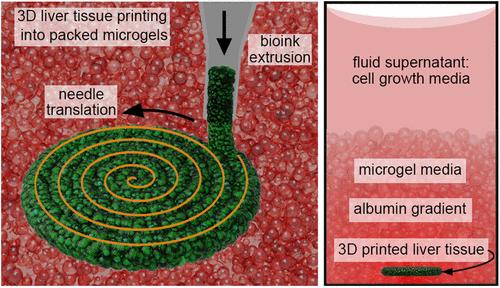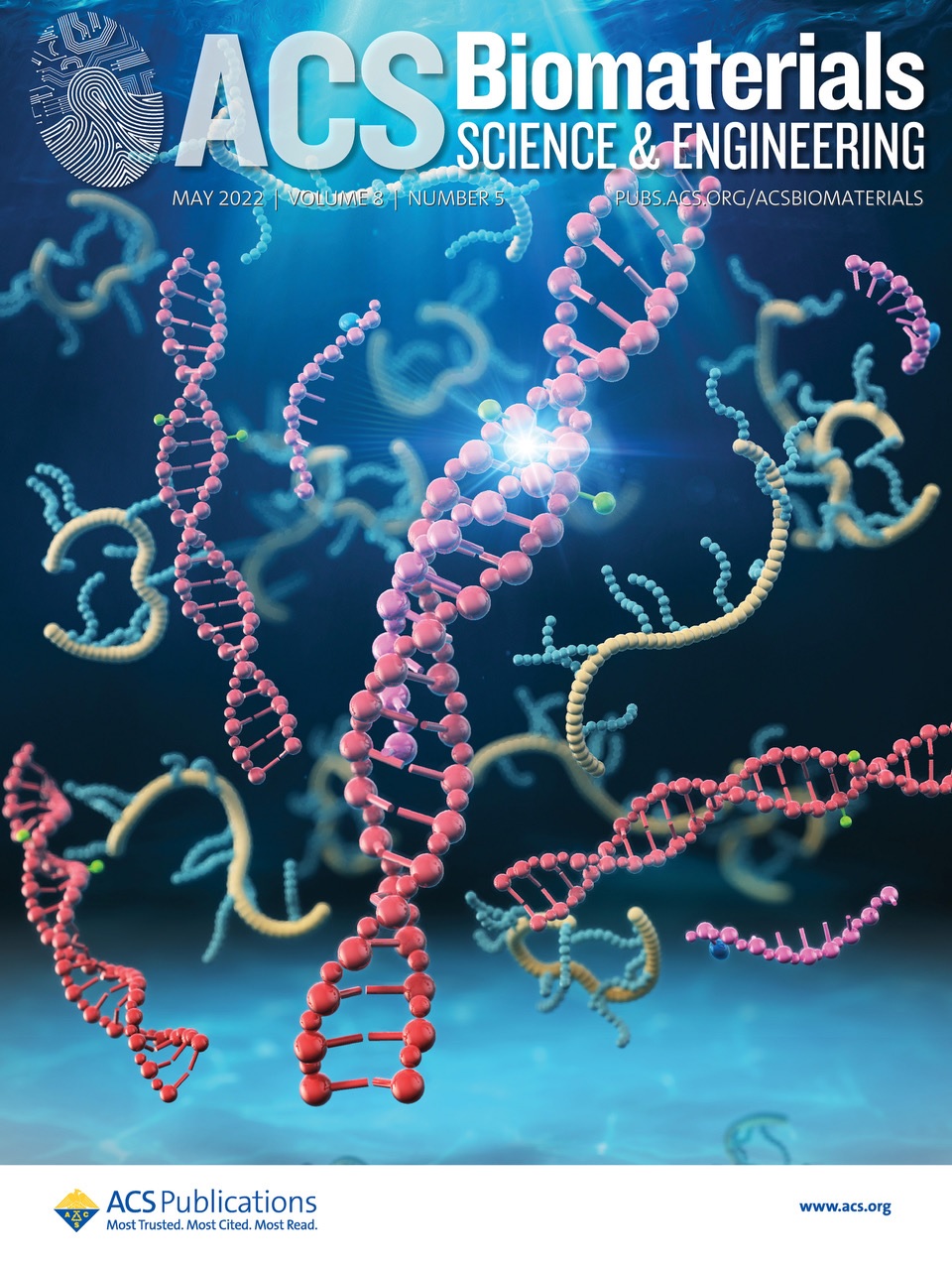从三维生物打印人体肝脏组织模型的上清液浓度测量值确定分子分泌率
IF 5.4
2区 医学
Q2 MATERIALS SCIENCE, BIOMATERIALS
引用次数: 0
摘要
白蛋白的分泌率是用于肝毒性和药代动力学测试的肝组织模型的一个重要功能指标。然而,如何通过测量上清液介质中的分子浓度来确定分子分泌率一般并不清楚。在这里,我们建立了一个实验系统中分子运输的计算和分析模型,从而能够根据上清介质中白蛋白浓度的测量结果确定白蛋白的分泌率。实验系统是一个三维生物打印的人体肝脏组织构建体,它被嵌入一个三维培养环境中,该环境由在液体生长介质中膨胀的包装微凝胶颗粒构成。数学模型显示,与实验测量的白蛋白浓度相匹配的白蛋白合成率范围对应于反应受限条件,在这种条件下,白蛋白的空间分布在两次培养基交换之间迅速达到稳定状态。我们的研究结果表明,通过对收集的上清培养基进行连续浓度测量,可以推断出具有时间分辨率的合成率。在药物开发和筛选等必须量化关键质量属性的应用中,这种联系对于自信地评估体外组织性能至关重要。本文章由计算机程序翻译,如有差异,请以英文原文为准。

Determining Rates of Molecular Secretion from Supernatant Concentration Measurements in a 3D-Bioprinted Human Liver Tissue Model
The secretion rate of albumin is a key indicator of function in liver tissue models used for hepatotoxicity and pharmacokinetic testing. However, it is not generally clear how to determine molecular secretion rates from measurements of the molecular concentration in supernatant media. Here, we develop computational and analytical models of molecular transport in an experimental system that enable determination of albumin secretion rates based on measurements of albumin concentration in supernatant media. The experimental system is a 3D-bioprinted human liver tissue construct embedded in a 3D culture environment made from packed microgel particles swollen in liquid growth media. The mathematical models reveal that the range of albumin synthesis rates necessary to match experimentally measured albumin concentrations corresponds to reaction-limited conditions, where a steady state of albumin spatial distribution is rapidly reached between media exchanges. Our results show that temporally resolved synthesis rates can be inferred from serial concentration measurements of collected supernatant media. This link is critical to confidently assessing in vitro tissue performance in applications where critical quality attributes must be quantified, like in drug development and screening.
求助全文
通过发布文献求助,成功后即可免费获取论文全文。
去求助
来源期刊

ACS Biomaterials Science & Engineering
Materials Science-Biomaterials
CiteScore
10.30
自引率
3.40%
发文量
413
期刊介绍:
ACS Biomaterials Science & Engineering is the leading journal in the field of biomaterials, serving as an international forum for publishing cutting-edge research and innovative ideas on a broad range of topics:
Applications and Health – implantable tissues and devices, prosthesis, health risks, toxicology
Bio-interactions and Bio-compatibility – material-biology interactions, chemical/morphological/structural communication, mechanobiology, signaling and biological responses, immuno-engineering, calcification, coatings, corrosion and degradation of biomaterials and devices, biophysical regulation of cell functions
Characterization, Synthesis, and Modification – new biomaterials, bioinspired and biomimetic approaches to biomaterials, exploiting structural hierarchy and architectural control, combinatorial strategies for biomaterials discovery, genetic biomaterials design, synthetic biology, new composite systems, bionics, polymer synthesis
Controlled Release and Delivery Systems – biomaterial-based drug and gene delivery, bio-responsive delivery of regulatory molecules, pharmaceutical engineering
Healthcare Advances – clinical translation, regulatory issues, patient safety, emerging trends
Imaging and Diagnostics – imaging agents and probes, theranostics, biosensors, monitoring
Manufacturing and Technology – 3D printing, inks, organ-on-a-chip, bioreactor/perfusion systems, microdevices, BioMEMS, optics and electronics interfaces with biomaterials, systems integration
Modeling and Informatics Tools – scaling methods to guide biomaterial design, predictive algorithms for structure-function, biomechanics, integrating bioinformatics with biomaterials discovery, metabolomics in the context of biomaterials
Tissue Engineering and Regenerative Medicine – basic and applied studies, cell therapies, scaffolds, vascularization, bioartificial organs, transplantation and functionality, cellular agriculture
 求助内容:
求助内容: 应助结果提醒方式:
应助结果提醒方式:


